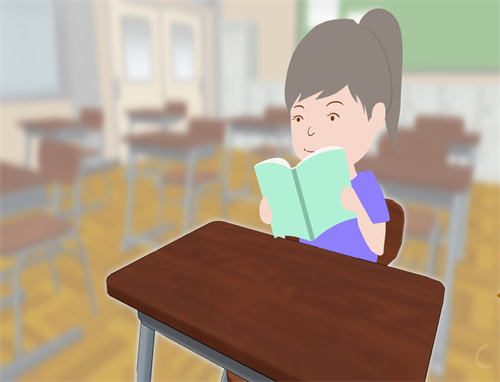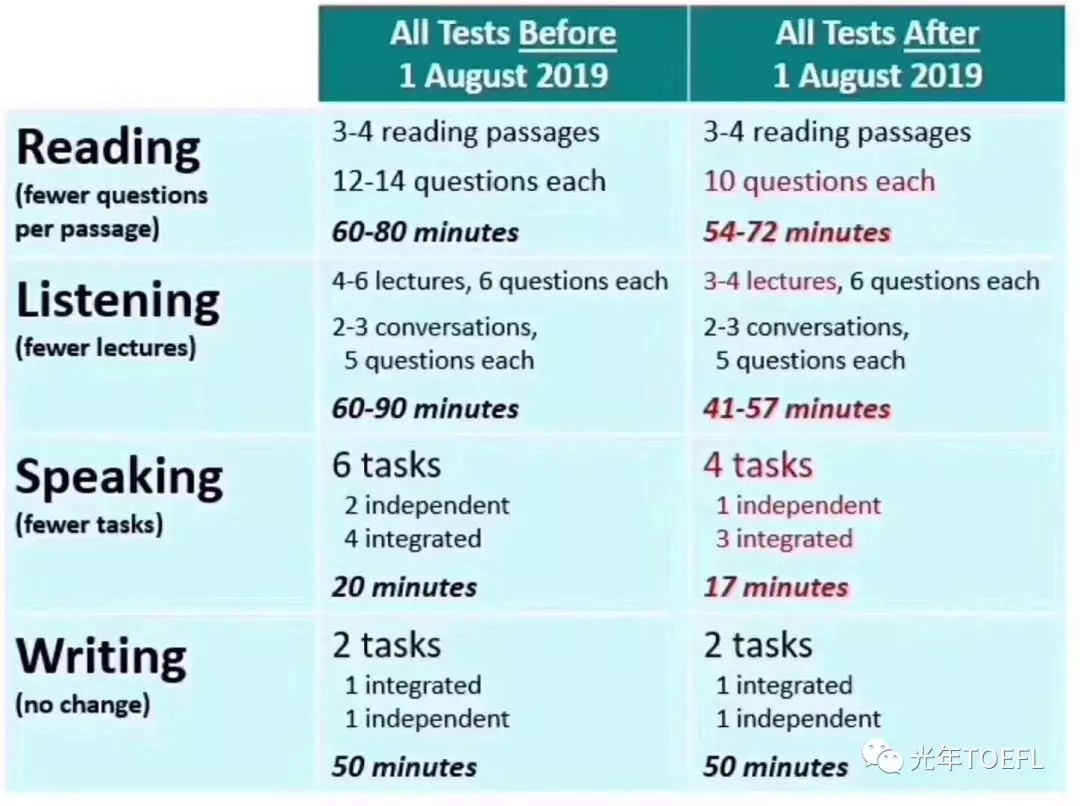托福阅读考试中时间压力是比较大的,因为托福阅读文章篇幅较长内容较多,同时题目数量也远超其它科目,今天小编给大家带来了 提升托福阅读答题速度2种方法思路介绍,希望能够帮助到大家,下面小编就和大家分享,来欣赏一下吧。
提升托福阅读答题速度2种方法思路介绍
托福阅读提速方法思路:先读每段前4行
第一种提速方法是先读阅读文章的每段前4行,注意这里不是前2行,因为现在很多文章首句通常是由专业名词组成或者是一些习语组成,首先读完前4行来了解文章主题和当前段落的大意内容和方向,对文章整体和段落有大致了解后再做题。这种方法可以让大家不用读完全文就能理解大意并且做题,是比较实用的提速思路方法。
托福阅读提速方法思路:直接做题边做边看
第二种提速方法是直接做题,然后在题中找关键词回到原文进行点查。第一题通常是文章的主题题,跳过不做,放到最后来做,其他的很多试题都是标记了行号或者可以通过特殊字符来辨认,当一道题没有这些标示的时候要通过邻近的其他试题来定位本题在原文中的位置。这样就可以在最大程度上节省托福阅读时间。
托福阅读提速要注意控制审题时间
在托福阅读中,ETS给出的文章中有大量故意制造的难句,词汇量不够,方法不对等,导致你的时间是不够的。在托福阅读备考中进行审题时,千万不要在理解题意和选项上花太多时间,更不能超过阅读文章的时间,考生要学会自己控制审题时间。
托福阅读备考策略介绍
1.如果基础一般的同学,想要参加托福考试,最好提前3-4个月准备起来。
一本好的词汇书是必不可少的。其实背哪一本词汇书不是重点所在,重要的是能够持之以恒,每天对所背的词汇进行复习和总结。因为你在做词汇题时如果能遇到你熟悉的词,可以节省你会到文章中去看上下文猜词的时间。虽然不能保证背到就一定能考到,但是单词可以帮助你更好的理解文章。
2.要从理解文章的结构开始理解文章。
我们要明白,托福考试的阅读文章都是北美校园基础课程的文章,基本没有做过改动。所以文章的结构就是完全按照美式作文的五段法,我们的考生只要用这样的方式去分析每一篇文章,就会发现他们的结构是大同小异的。
3.积累背景知识对我们来说相当的重要。
因此我们在做新托福阅读的题目的同时,也应该在空余的时候多阅读课外读物,原版杂志。譬如,国家地理,自然,今日美国等一些著名的原版杂志,这不仅可以扩充我们的背景知识,同时也可以补充我们在词汇量上的不足。
4. 在复习的最后阶段,做做模拟练习题是必不可少的。
如果有条件的话,最好做一下模考软件。因为这样可以模仿新托福机考的真实场景。比较推荐的模考软件有Barron, Kaplan以及一些比较权威的模考网站。当然在你报名时托福官方网站提供给你的那一套不完整的模考题也是很有参考价值的。
托福阅读冲刺满分必备高效方法
1.词汇
从某种意义上来讲,词汇量的大小是TOEFL阅读理解高分的基础和关键。而且TOEFL的阅读量非常大,一般的中国考生根本无法把文章全部读完。因此托福词汇量的积累和阅读技巧、解题技巧的训练就十分必要。
从某种意义上来讲,词汇量的大小是TOEFL阅读理解高分的基础和关键。如果词汇量没有达到基本要求(五千以上),纵然你有"葵花宝典"在手,也只能命丧ETS的“毒招”之下。所以,以牺牲托福词汇量为代价的技巧练习简直是一味巨毒无比的“五毒散”。
2.通过练习使学生养成高效的阅读方法——即所谓的托福阅读技巧
TOEFL的阅读量非常大,一般的中国考生根本无法把文章全部读完,所谓的“扫读法”、“跳读法”和“略读法”也只能适用于少数类型的文章,根本不能解决本质问题。那么,文章到底应该怎么读法呢?一句话,主动地阅读文章的关键部位。所谓主动是指不能象一般的阅读那样完全被动地接受信息,而应该不断的进行思考和预测;所谓关键部位,主要是每一段的开头和结尾部分。由于TOEFL的阅读理解文章全部选自于正式出版物,文章的逻辑结构非常完整和严谨,而且出现的逻辑模式也是屈指可数。经过系统的训练,考生的预测可以做到非常准确的程度。这样,通过阅读文章的几处关键部位,就能很快地把握整个文章的结构和内在的逻辑关系,也就解决了问题的70%。
3.解题训练
排除法恐怕是一直以来大多数学生在解阅读理题目时使用最多的方法。事实上,这种方法具有致命的缺点:干扰大、费时间。更有效和迅速的办法是读完题干之后,就在脑子反映出一个模糊的或者是不完整的答案,然后直接在选项中寻找接近的答案进行判断。这种能力必须在平时的训练和讲解中逐渐养成和加强,决非什么技巧之类的东西可以替代。
托福阅读详解之关于建筑的一些事
architecture:n. 建筑
enclose:v. 围住,圈起,封入
practical:adj.实用的
symbolic:adj.象征的
directly:adv. 直接地
determine:v.决定
utilize: v. 利用
achieve: v. 完成
seek: v. 寻找
shelter:v. 保护
enhance:v. 提高
contribute:v. 捐献,提供 (contribute to: v. 促成,有助于)
enrich:v. 使富有
complement:v. 补充,补助;n. 补充物
feasible:adj. 可行的 注:考词汇题,等于
achievabledefine:v. 解释,限定,规定
contemporary:adj.当代的
trace:n.痕迹
be traced to:追溯到
meet: v. 满足
be based on: 根据
devise:v. 设计发明 注:考词汇题,等于
createin relation to:与…有关
in terms of: 根据,就…而言
deal with: 处理
withstand: v. 抵抗,反抗,承受
Architecture is the art and science of designing structures that organize and enclose space for practical and symbolic purposes. Because architecture grows out of human needs and aspirations, it clearly communicates cultural values. Of all the visual arts, architecture affects our lives most directly for it determines the character of the human environment in major ways.
Architecture is a three-dimensional form. It utilizes space, mass, texture, line, light, and color. To be architecture, a building must achieve a working harmony with a variety of elements. Humans instinctively seek structures that will shelter and enhance their way of life. It is the work of architects to create buildings that are not simply constructions but also offer inspiration and delight. Buildings contribute to human life when they provide shelter, enrich space, complement their site, suit the climate, and are economically feasible. The client who pays for the building and defines its function is an important member of the architectural team. The mediocre design of many contemporary buildings can be traced to both clients and architects.
In order for the structure to achieve the size and strength necessary to meet its purpose, architecture employs methods of support that, because they are based on physical laws, have changed little since people first discovered them—even while building materials have changed dramatically. The world’s architectural structures have also been devised in relation to the objective limitations of materials. Structures can be analyzed in terms of how they deal with downward forces created by gravity. They are designed to withstand the forces of compression (pushing together), tension (pulling apart), bending, or a combination of these in different parts of the structure.
Sentences
P1
Architecture is the art and science of designing structures [that organize and enclose space for practical and symbolic purposes.]建筑是一门【处于实用和象征的双重目的,通过组织和利用空间来实现设计结构的】艺术和科学。Of all the visual arts, architecture affects our lives most directly [for it determines the character of the human environment in major ways].在所有的视觉艺术中,建筑最直接地影响了我们的生活,【因为他在很多方面决定了我们生存的环境特征】。
P2
Buildings contribute to human life [when they provide shelter,enrich space,complement their site,suit the climate,and are economically feasible].建筑物为人类的生活提供了遮蔽处,丰富了空间,增加了人们的活动场所,完善了人们的居住场所,适应了气候的变化,同时在经济上也可承受。The client [who pays for the building and defines its function]is an important member of the architectural team.在建筑团队中,最重要的是【那些为建筑支付建设费用并设计其功能的】人。
P3
In order for the structure to achieve the size and strength necessary to meet its purpose, architecture employs methods of support that, [because they are based on physical laws], have changed little [since people first discovered them]—[even while building materials have changed dramatically. ]为了达到建筑的目的,一定的大小和强度是必须的。建筑采用的各种支撑方法【自从人们发现它们以来】很少有改变,【因为这些方法都建立在物理定律的基础上】,【尽管建筑材料已经发生了翻天覆地的变化】。
P1 建筑的定义。建筑是一门出于_____和______的双重目的,通过组织和利用空间来实现设计结构的____和_____。建筑可以清楚的传达_____。在所有的视觉艺术中,建筑____地影响了我们的生活。
P2 建筑的作用及影响者。建筑是一种利用_____、_____、_____、_____、_____和_____的三维立体形式。
P3 支撑方法的改进。建筑采用的支撑方法都建立在_____的基础上。
Answers:P1:Art, science; practical and symbolic purposes; cultural values; directlyP2space, mass, texture, line, light, and colorP3physical laws






